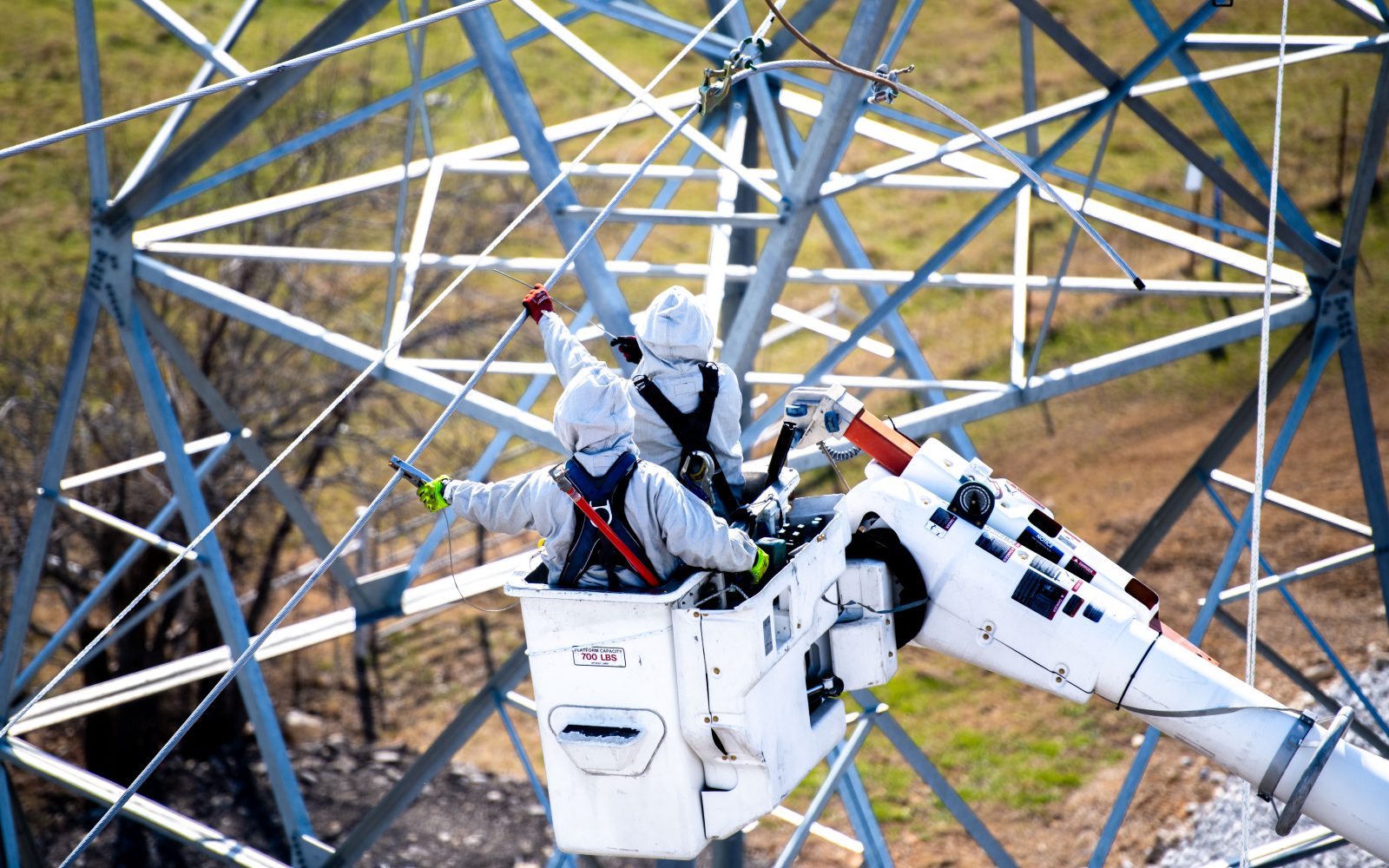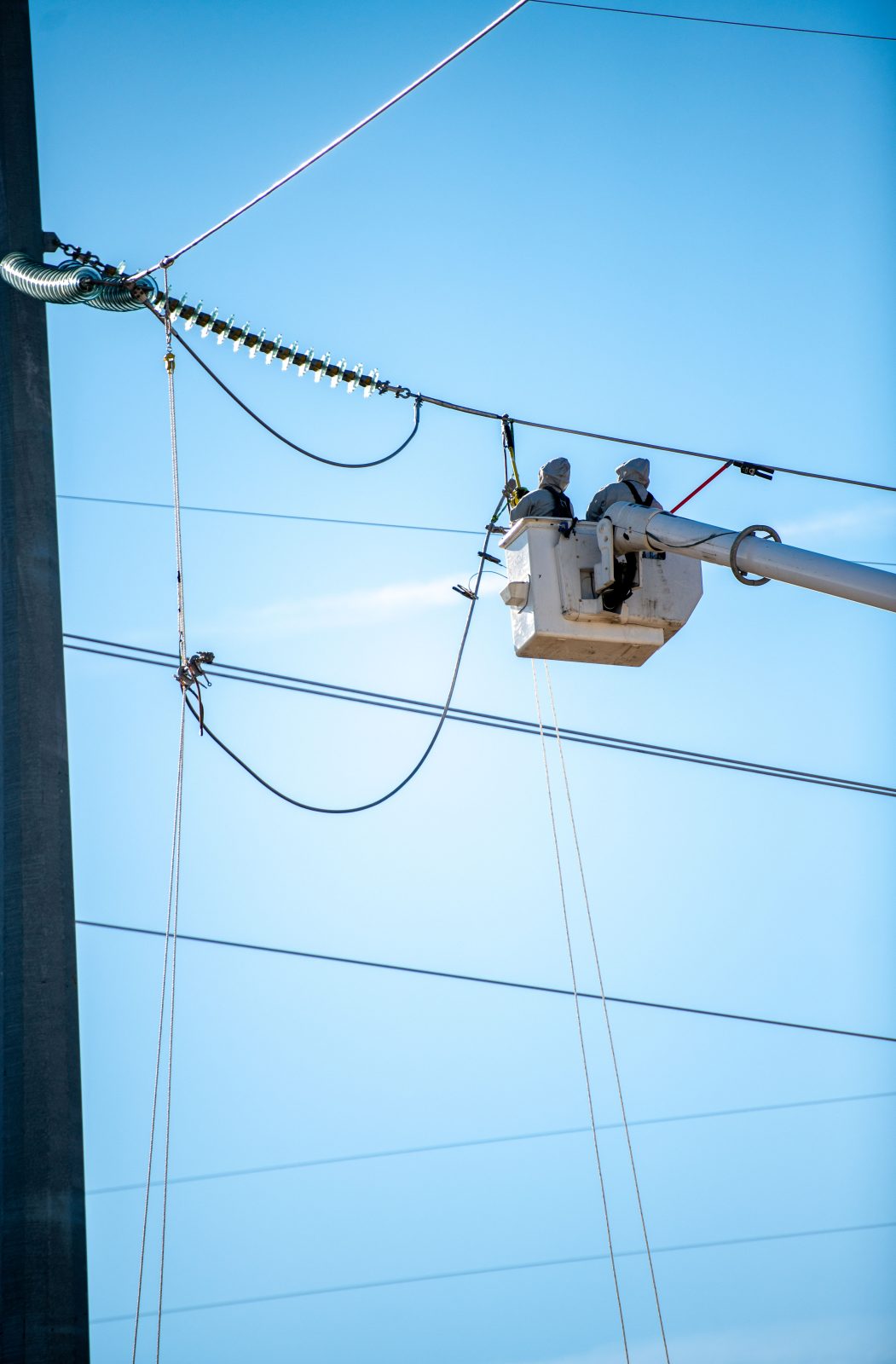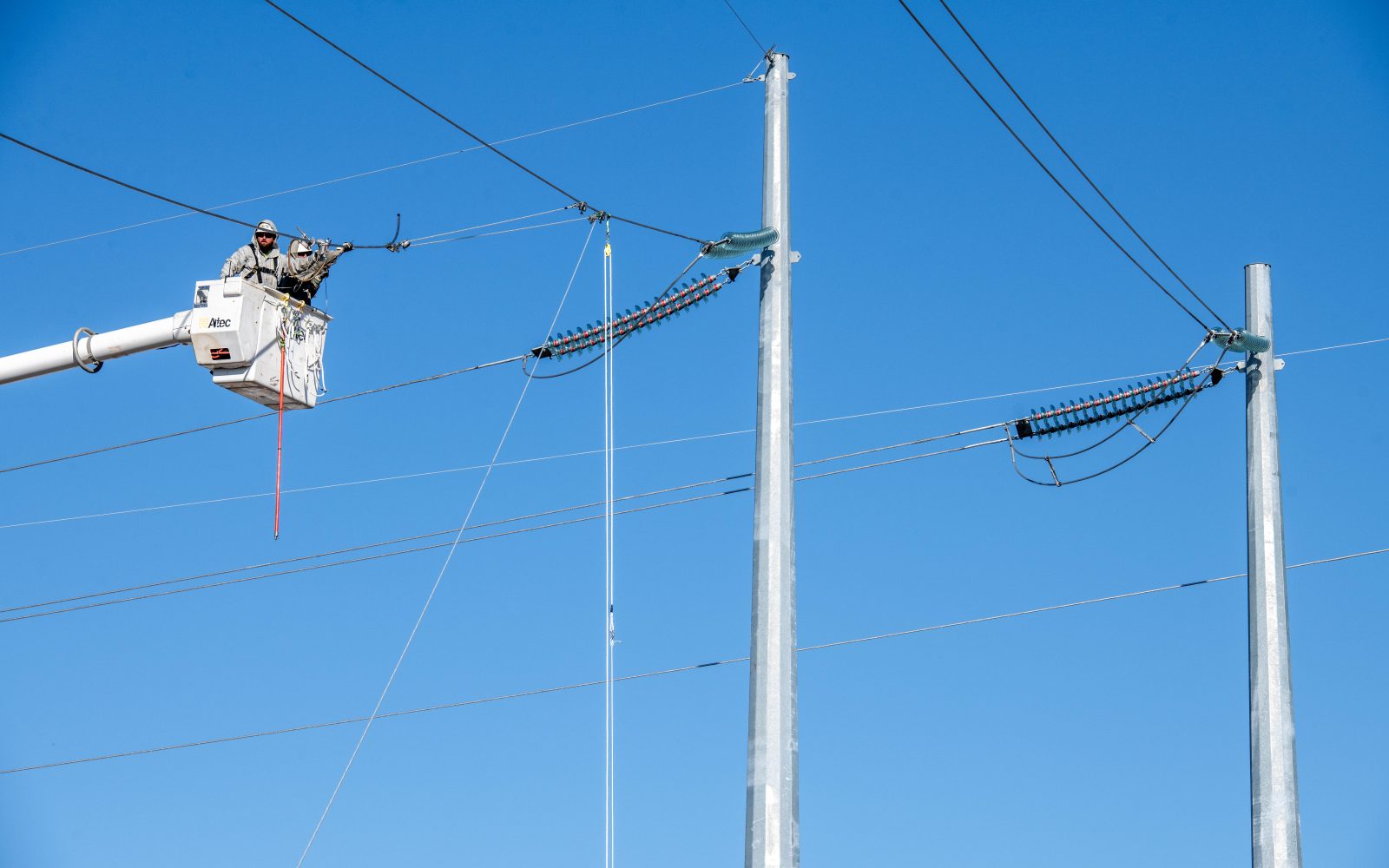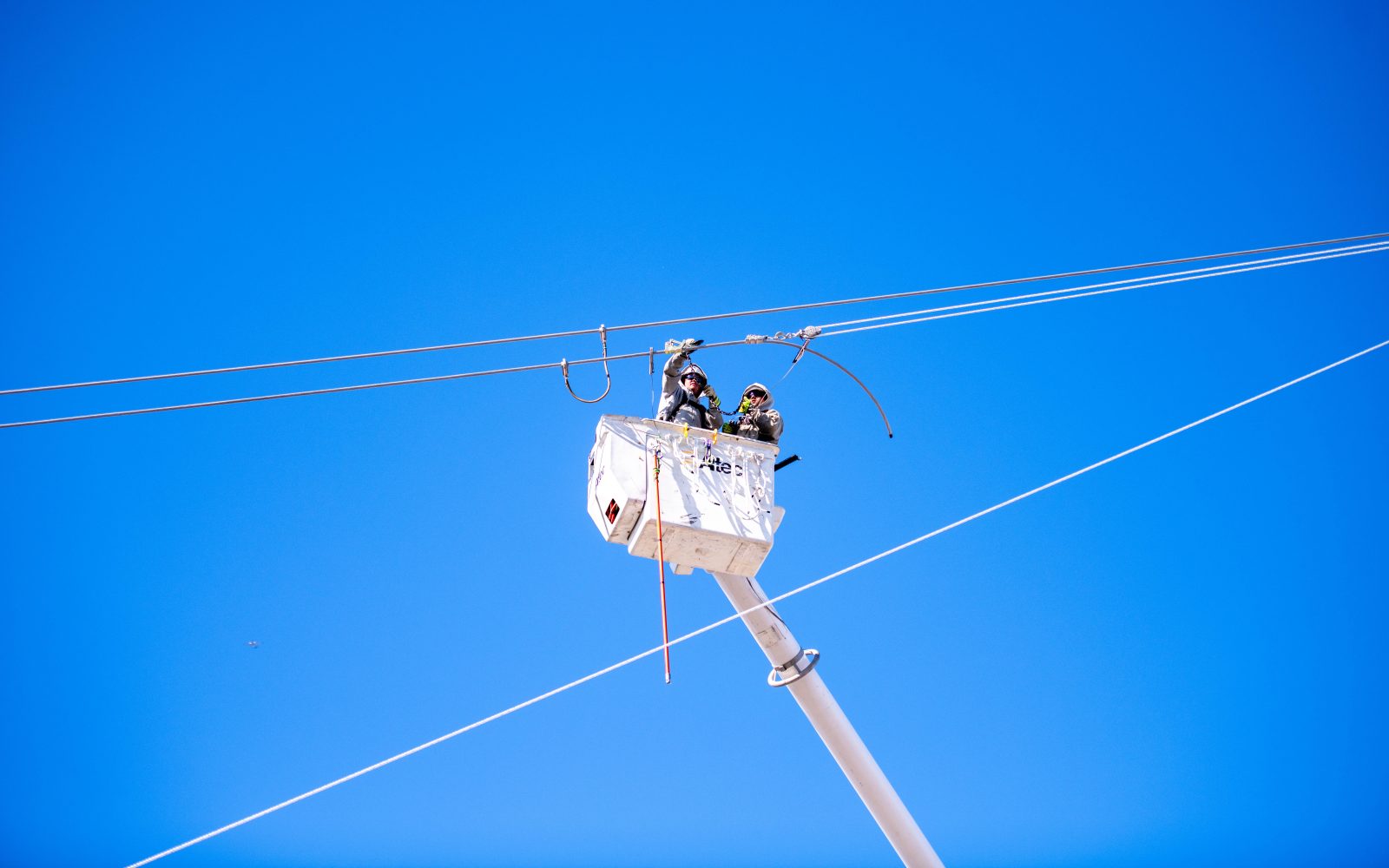
July 1, 2025 Great Southwestern Construction Performs Important Energized Construction for Customers
GSW, Fellow MYR Group subsidiary Harlan Electric launched live-line barehand programs in 2019
Understanding the needs and goals of a partner is the cornerstone of every healthy relationship.
You must listen and care. It’s essential.
Great Southwestern Construction (Great Southwestern) and Harlan Electric (Harlan)had maintained long-lasting relationships with utilities in their area because they understood this basic requisite of a partnership.
And so, they listened.
It just so happened that around the same time in 2018, both MYR Group subsidiaries independently started hearing the same thing – energized construction was the future.
If they wanted to keep those strong relationships going, they would need to demonstrate the ability to perform live-line barehand work and help their customers reduce outages and all the complications that stem from lines being out of service.
And so, they cared.
Despite the investment it would take to launch completely new barehand programs from scratch, neither company’s leadership hesitated.
“I went to them and said this was the direction we needed to go, I just had to show that there was absolutely a need. And honestly, it was no problem,” Great Southwestern Regional Manager Ryan Little said. “(President) Brandon Lark just said, ‘make it happen,’ and we went from there.”
Working the Line “Hot”
Energized work methods allow utilities to maintain uninterrupted service on their systems. This minimizes disruptions to power customers and lowers the utility’s operational costs. Hot sticking is one form of energized work, where a lineworker uses an insulated stick to work on live high-voltage electrical equipment (commonly referred to as “hot” lines).
Live-line barehand work, however, is a specialized form of energized work where a lineworker performs their tasks at the same potential as the conductor they’re working on. This is achieved by wearing a unique suit made from fire-retardant materials and stainless-steel fibers, creating a Faraday Cage.
I think along with the skill comes a different mindset. There are a lot more technical aspects that you’re constantly having to weigh and consider, and plan for. You must be 100 percent prepared, and there is no room for error.
GSW Construction Manager Tyler Mathis
Essentially, the electrical charge flows around the outside of the suit and not through the lineworker’s body. To do this, the lineworker “bonds on” to the conductor, which flows the charge around the suit and protects the worker inside the electrical field.
A robust training program is critical for lineworkers to fully understand the technique and build the necessary skills to safely perform the work.
“It’s the mindset that comes along with it that I think separates people because you can work in a de-energized setting and make mistakes and get away with it,” Great Southwestern Construction Manager Tyler Mathis said. “But in the energized setting, the things that you can get away with working de-energized versus working it hot are 100 percent different.
“So, I think along with the skill comes a different mindset. There are a lot more technical aspects that you’re constantly having to weigh and consider, and plan for. You must be 100 percent prepared, and there is no room for error.”
Building A Barehand Program from the Ground Up
In Texas, Little and Great Southwestern brought in experienced barehand lineworkers like Operations Manager Billy Walsh, who brought 25 years of experience in energized work. They also received barehand training from a third party, and leaders took part in train-the-trainer courses.
“This was a huge investment and a lot more than your normal construction crew or maintenance crew,” Little said. “We took a group of people that had never done this work before and put them through a rigorous training to be able to win and perform the work.”
Lineworkers learning barehand work must understand more complex electrical theory and take great care in planning the work because there is no room for error when handling an energized, high-voltage transmission line.

It also applies principles that are different from other methods of line work.
“Lineworkers are taught to maintain their minimum approach distance (MAD) to keep a distance from the conductor,” Little explains. “But with energized work, it’s the complete opposite. We have to become that potential. We must stay as close to it as we can. If we get too far away, that’s when we become a different potential, and the danger comes in.”
The success of Great Southwestern and Harlan’s training programs led to the creation of the Live Line Academy, MYR Group’s energized training facility located in Alvarado, Texas.
There, lineworkers from MYR Group subsidiaries can receive live-line barehand training on a variety of energized structures in a safe and controlled environment and avoid the hurdles Harlan and Great Southwestern faced early on while launching their individual programs in 2019.
Successful Portfolio of Energized Work
Great Southwestern’s first live-line barehand project came near the end of 2019, working on 345kV transmission lines, but the bulk of their work is done for the utility on 138kV lines in West Texas.
Crews work on energized lines daily, helping their customers prevent costly outages while simultaneously advancing the careers of Great Southwestern lineworkers over the years in the process.
“There’s a lot of knowledge for this type of work here at Great Southwestern,” Mathis said. “Our leadership will get you the answers you need, and that’s helped me in my career with this type of work from just starting out in 2018. These guys have made such a challenging part of the trade into a pretty easy transformation.”





